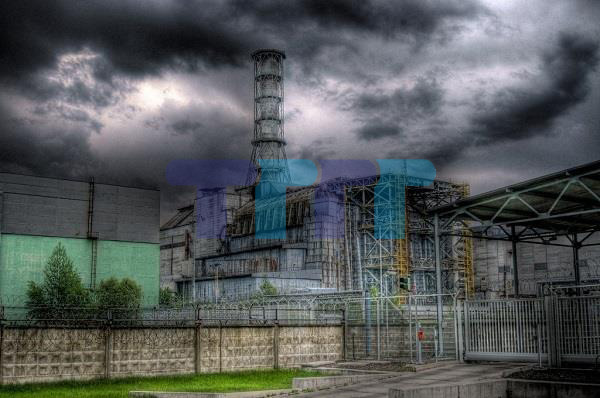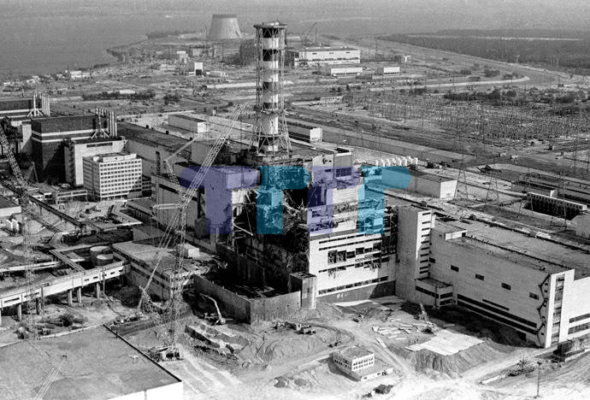The Chernobyl nuclear power plant disaster not only caused incredible human suffering but also left a lasting impact on the environment. The land and water sources in the surrounding area are still heavily polluted, creating an isolated and unlivable area. This incident has changed the view of the nuclear safety regime and had a clear impact on the global nuclear energy industry. If you are interested in this event, please join TTTT to find out through the article below.
Contents
Summary of the Chernobyl nuclear power plant disaster

History and development of the Chernobyl nuclear power plant
Cause of the Chernobyl nuclear plant explosion

The main cause of the incident at the Chernobyl nuclear power plant is believed to be due to shortcomings in the design of reactor number 4 and the technicians used did not follow proper safety procedures. Here are some main reasons:
Many faults in the design stage
- Reactor No. 4 at the Chernobyl plant uses the RBMK reactor. This type of furnace has a design that has the potential to create unsafe situations. One of the weaknesses of the RBMK design is that the automatic control system is incomplete and cannot ensure stability in special operating modes.
The safety testing process was not satisfactory
- The explosion took place during a test in which the reactor’s safety regime failed to meet requirements. The technicians performing the testing did not follow correct procedures or did not understand safety procedures.
- During the testing, the failure to shut down the nuclear reactor caused the reactor’s power level to drop very low, creating conditions for increased overheating, eventually causing an explosion. dangerously strong.
See more: What is rheostat?? What is the operating principle of a variable resistor?
Consequences, impacts and lessons learned from disasters
Consequences and effects of disasters
- Huge impact on humans: the Chernobyl nuclear power plant disaster killed and injured many people and the consequences continued for a long time afterward due to radiation. Affected people suffer from a wide range of health problems such as cancer, cardiovascular disease, immune system diseases, and reproductive problems.
- Serious impact on people’s lives: About 350,000 people had to be urgently relocated far from the area around Chernobyl and more than 5 million people were affected by the lack of safe places to live and the loss of their right to live in the area. hometown. The displacement of people has created major social and economic impacts, with many people having to move to new places and start life from scratch.
- Environmental pollution and biodiversity: the Chernobyl disaster caused a large amount of radioactive material to leak into the environment. The area around the nuclear power plant remains contaminated and uninhabitable. The natural environment has been impacted, causing changes in biodiversity and environmental degradation.
- Major impact on the regional economy: The Chernobyl nuclear power plant was seriously damaged and could not be repaired for use. This has eliminated an important power supply and caused significant economic losses. Reconstruction costs and rehabilitation work have been invested to bring the area back to normal condition.
Lessons and changes after disasters

- Improving safety levels: The Chernobyl nuclear power plant disaster has made countries step up and improve safety control processes in the nuclear industry. Reactor inspection and verification, maintenance and repair procedures are improved to ensure safety and avoid similar incidents.
- Cooperation between countries: the Chernobyl disaster has shown the importance of cooperation and information sharing between countries on issues in the nuclear energy industry. International organizations such as the International Atomic Energy Agency (IAEA) and the World Health Organization (WHO) have provided support and expert advice in dealing with the consequences and health research. after the incident.
- Additional safety measures: Nuclear safety regulations and standards have been strengthened to ensure risk control and protection of the environment and human health. New measures such as environmental impact assessment, risk analysis, and radioactive waste management have been introduced.
- Research on health and environmental effects: Germany has initiated the SHI Giraffe program in several Eastern European countries to monitor the health of affected individuals and reproductive performance. Scientific research has increased our understanding of the effects of radiation on humans and the environment, thereby providing valuable information for determining protective and preventive measures.
- Closing and upgrading old nuclear plants: The Chernobyl disaster has highlighted the importance of closing and upgrading old nuclear plants, especially units that are outdated in design and do not meet regulatory requirements. new safety standards. Many old nuclear plants have been shut down and dismantled, while those still in operation have undergone upgrades and modernization to ensure reliability and safety.
- Increasing human consciousness: the Chernobyl event, has shaken up the danger of nuclear danger and its potential impact on humans. Therefore, equipping the designers, users and maintainers with special basic knowledge must also be extremely important.
See more: Learn about what components an electromagnet consists of.
Company name:
TTTT GLOBAL co Ltd,.
Address: Landmark 4 Building, Vinhomes Central Park, 720A Dien Bien Phu Str, Ward 22, Binh Thanh District, Ho Chi Minh City, Vietnam.
Website: https://ttttglobal.com/en/
Hotline: +84286 2728 334
Email: Info@ttttglobal.com
CATEGORY: TECHNICAL QUESTIONS AND ANSWERS





![Volvo Penta price list for [Made in India] engine 2022 volvo-penta-made-in-india](https://ttttglobal.com/wp-content/uploads/2022/04/volvo-penta-made-in-india.jpg)





